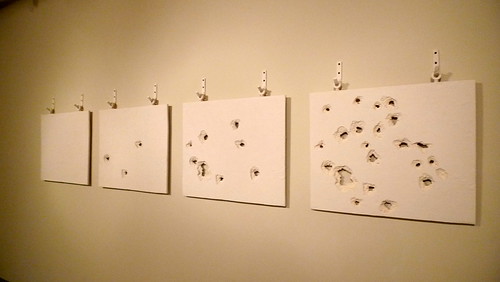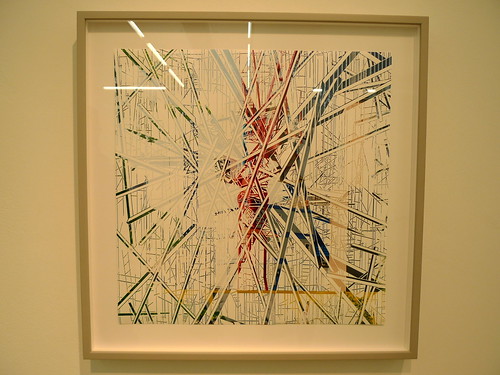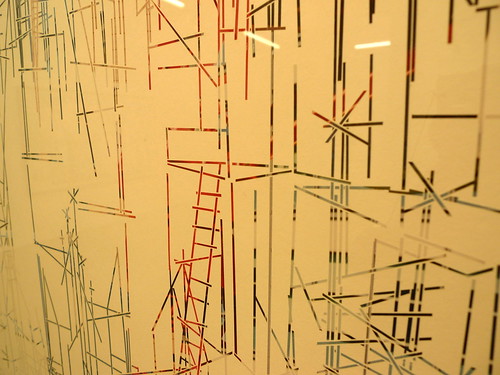It comes to our attention there are two shows within walking distance in Shoreditch that co-incidentally share a common feature in the works they are showing - a 'white-out' treatment.
Taliban Bullet Holes & Crude Oil Silksreens by Piers Secunda
16.11-24.12.2011

the "Bullet Hole" series
Piers Secunda has developed into a specialist using "paint" as a sculptural material, rather than the medium in his career. He flew to Kabul in summer 2010 with the sole intention of specifically casting Taliban bullet holes. Two suicide bomb attack sites were located in advance and existing bullet holes were confirmed on site by witnesses and the Kabul police to be Taliban. The first site was an attack on a private security firm in a residential area of Kabul. At the outset of the Taliban’s assault on the building, two drivers for the security firm were fatally shot inside their car on the street. The works in this exhibition were created directly from the casts of bullet holes made as members of the Taliban shot through and around this car – killing the drivers and pock-marking the wall behind. These bullet hole casts have been integrated into a series of wall mounted paint “relief” sculptures, their hanging devices also cast from paint.
Six-minute documentary about the Taliban works

'Painting' on paint in the "Crude Oil Silkscreen" series
As the curator of the gallery Stuart Semple said, “Piers has always made an important contribution to both painting and sculpture, but now with the materiality of the work being harnessed to record extreme politics, we have his most powerful series to date. I feel absolutely privileged to have the opportunity to show this in the gallery.”
Piers' bullet holes series is equivalent to an isolated replica of war crime evidence. And the way he creates them is similar to a forensic officer, reconstructing the crime scene by extracting residues of available material evidence. These works are bound to be controversial in their nature, but as Piers said in his interview, "I've come to accept that this stuff happens throughout the world all the time so I document it." The choice of white colour in the paint gives a cynical touch of sterile operation which authorities often employ to underplay issues they do not want to arouse attention to.
Full photo set here
View Larger Map
*****
Let Us Build Us a City & a Tower by Richard Galpin
14.10-19.11.2011

Brace V (Boom), 2011 peeled photograph
Different from Piers Secunda's efforts to replicate the subject matter to his audience, Richard Galpin strips away the superficials on his selected urban scenes and reveals the underlying orders (or chaos) in the city. And he only uses a scalpel in the whole process to intricately score and peel away the emulsion from the surface of the photograph. The end product sometimes look like a collage, but it is not the case at all. You can see in the video below how precise and time-consuming the process is:
Working process and influences by Richard Galpin
Graduating from the Goldsmiths MA in 2001, Richard has been holding solo shows every year since 2005. His works are also collected by the V&A Photography Collection. The 'edited' photographs are probably not an overall depiction of the environment where they were taken, but they symbolise the spontaneousness, hierarchy and diversity of every contemporary city.

Close up of Stem II (Span), 2011 peeled photograph
Full photo set here
*****
We feel very grateful to see art shows with works directly confronting the social-political situation in the more and more gentrified Shoreditch. And the "white-out" is a powerful visual approach to bring the audience's attention immediately to the subject matter.
Further Readings -
Page: Official page of Piers Secunda
Page: Official page of "Taliban Bullet Holes & Crude Oil Silksreens by Piers Secunda" in Aubin Gallery website
Page: Interview with Piers Secunda, Almanac Christmas 2011
Page: Official page of Richard Galpin
Page: Official page of "Let Us Build Us a City & a Tower" in Hales Gallery website
Video: "Richard Galpin, Viewing Station, The High Line, New York" by Richard Galpin